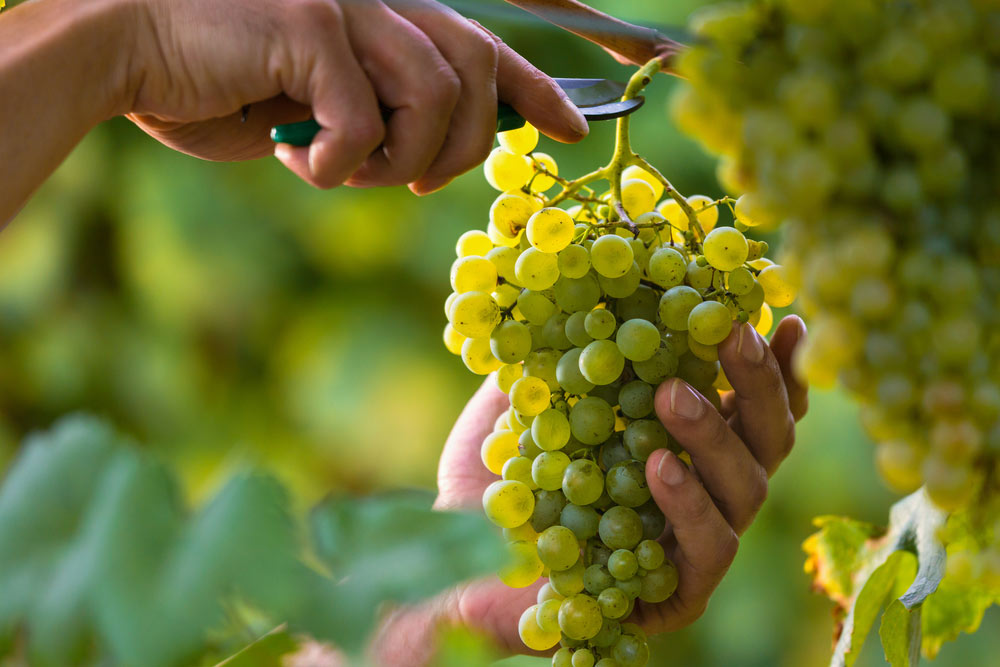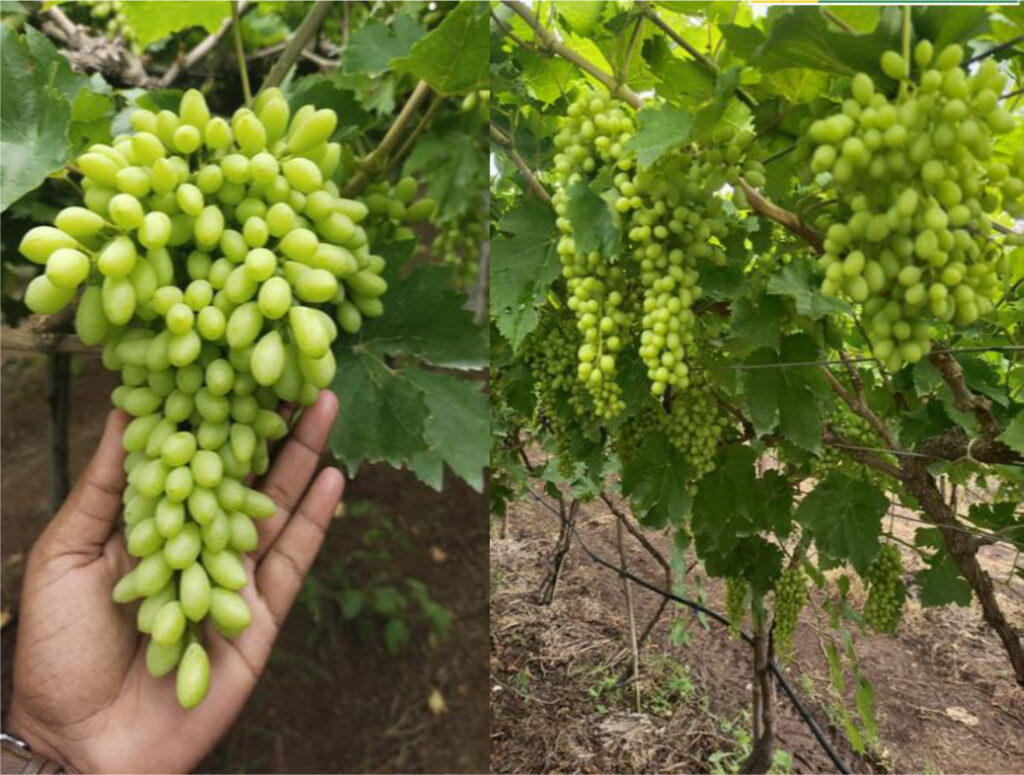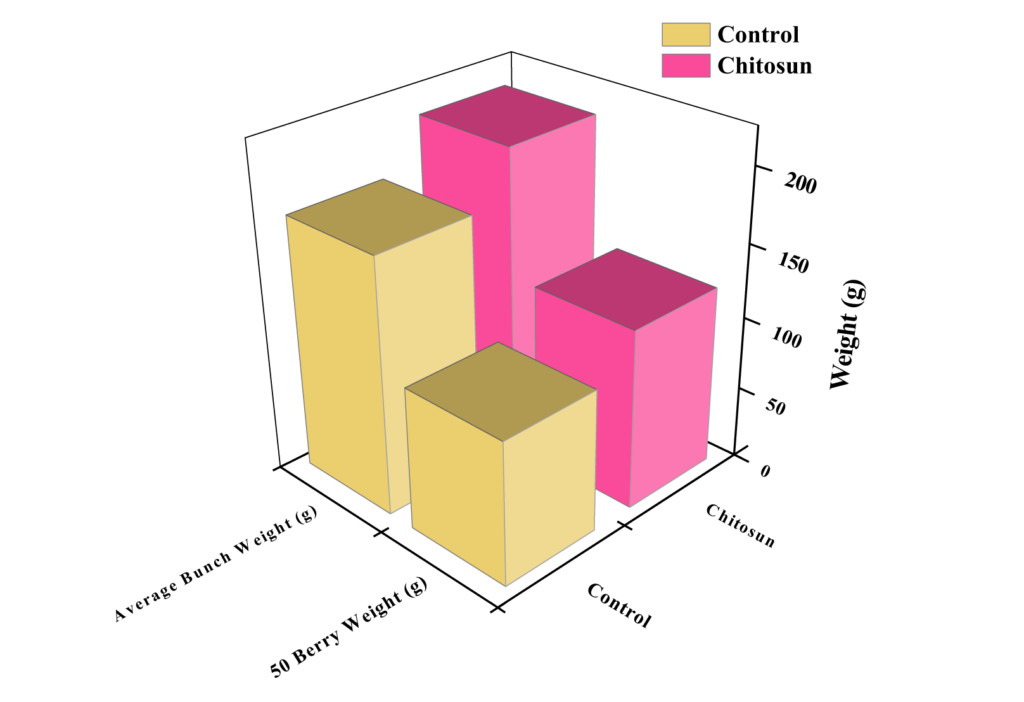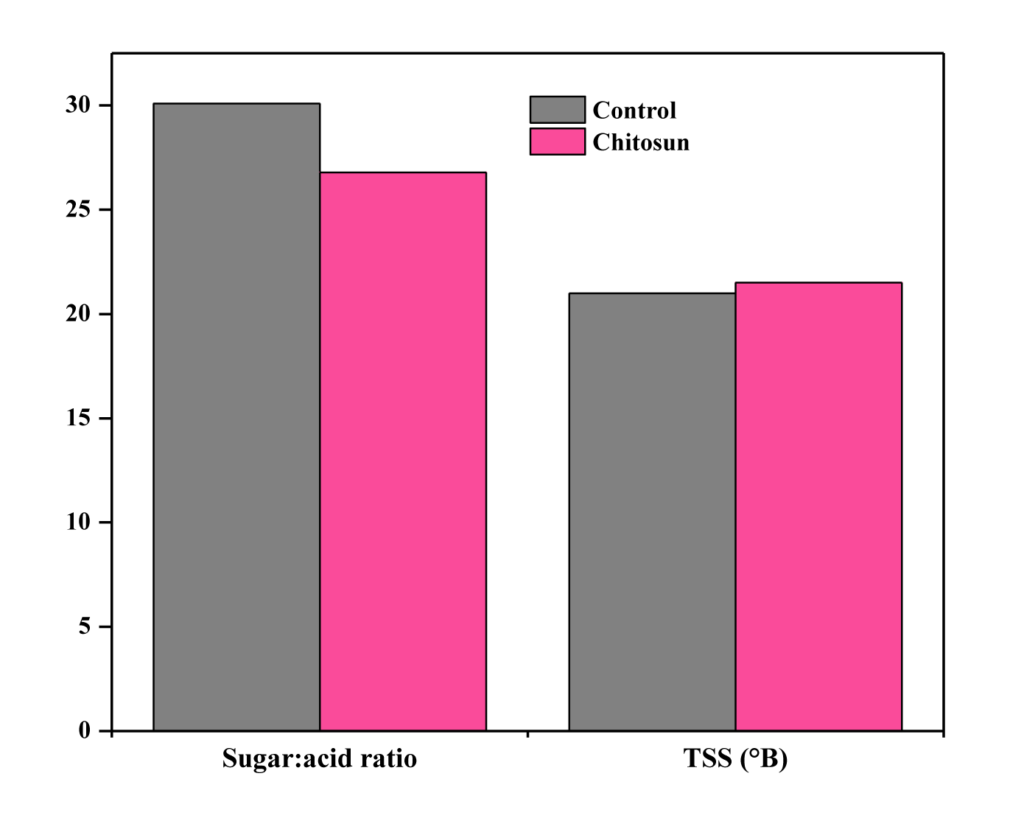Blog
- Blog
- Home
Chitosun Revolution: Transformative Impact on Grape Cultivation, Yield, and Quality in Modern Agriculture

Grape vine (Vitis vinifera L.) is considered one of the most popular and common fruits in the world. India is one of the largest grape-producing countries in the world. Grapes are grown in various states across India, with Maharashtra being the largest grape-producing state. Maharashtra is the largest grape-producing state in India, accounting for more than 80% of the total grape production in the country. Grape cultivation in India is mostly done on a commercial scale, with large farms and vineyards spread across the country. Today, India is one of the top grape-producing countries in the world, with over 2 million metric tons of grapes produced annually.
Its marketing value depends upon its desirable appearance (homogeneity of the colour), berry and cluster size and shape. Grapes are highly perishable non-climacteric fruits and, their fruit quality characteristics are influenced by many biotic and abiotic factors. Therefore, any efforts that could be done to maintain the grape fruits with high quality characteristics such as berry size, weight, during marketing, would be very important for the grapes growers in order to obtain higher monetary return.
The discovery of biostimulant and their ability to regulate all aspects of growth and development were defining moments in horticulture. Accordingly, the exogenous application of various plant biostimulants to different stages of developing fruits and endogenous levels have highlighted their importance for fruit development and quality characteristics. Here Auraphyll introduces Chitosun, as a biostimulants have a great influence on fruit maturing and ripening. In the meantime, the role Chitosun in the grape berry is purported to be involved in the water stress tolerance (flooding and drought), stimulates stem elongation, reduces fertilizer requirements, and fights against pests and increases yield by up to 30%.

Figure 1: Grapes grown in the Mr. Sachin Ambadas Jagtap’s, grapes yard located in Nashik
Mr. Sachin Ambadas Jagtap, from Nashik, a visionary and enterprising farmer, implemented a cutting-edge approach by integrating Chitosun into his grape cultivation methodology (Figure 1). This astute decision not only led to a remarkable increase in the overall yield of his grape farm but also yielded substantial financial gains. The successful utilization of Chitosun showcases Mr. Jagtap’s commitment to adopting innovative techniques for agricultural enhancement, setting a precedent for other farmers to explore novel strategies for increased
productivity and profitability.

Figure 2: Effects of chitosun on the grape yield was represented by average bunch weight and 50 berry weight. Data’s were represented in gram (g).
Chitosun is suspected to play a role in influencing weight (Figure 2). The application of chitosun spray resulted in a notable rise in the average bunch weight, reaching 246.5 g, compared to the control group’s weight of 174.5 g. This represents a substantial increase of 41.26% over the control. Moreover, the 50-berry weight in the chitosun-treated vines was higher at 123 g, in contrast to the control group’s 99.7 g, signifying a 23.37% increase over the control.

Figure 3: Effects of chitosun on the fruit composition of grape yield was represented by average bunch weight and 50 berry weight. Data’s were represented in gram (g).
The impact of the chitosun treatment on fruit quality components was strikingly evident, revealing a notable enhancement in various aspects (Figure 3). The berries, displaying a distinct larger and bolder profile, showcased increased diameter and weight under the influence of chitosun. This observation not only emphasized the effectiveness of the chitosun treatment but also highlighted its potential to influence the physical attributes of the fruit.
Furthermore, the comparison between the chitosun-treated plants and the control group extended beyond size differences. In a comprehensive assessment of fruit composition parameters, a significant divergence was observed, with the chitosun-treated plants exhibiting marked variations, especially in metrics such as total soluble solids and the sugar-to-acid ratio. This nuanced understanding underscores the multifaceted impact of chitosun on the overall quality and composition of the fruit, presenting an intriguing avenue for further exploration and optimization in agricultural practices.

Figure 4: Influence of chitosun on yield per acre of grapes. Data’s were represented in tons (t).
The utilization of Chitosun in vine treatment proved to be a pivotal factor in augmenting the overall grape yield (Figure 4). The vines subjected to Chitosun displayed an impressive production of 7.4 tonnes per acre, marking a substantial 65% increase over the control group, where vines yielded 4 tonnes per acre. This notable disparity in yield not only underscores the efficacy of Chitosun but also emphasizes its role in fostering enhanced agricultural outcomes.
It is noteworthy that the Chitosun-treated plants, with their substantial yield of grapes, exhibited a twofold increase compared to the control. This outcome not only signifies the tangible impact of Chitosun on yield but also opens avenues for exploring the nuanced mechanisms through which Chitosun contributes to the overall productivity and resilience of grapevines. The robust performance observed in Chitosun-treated vines stands as a testament to its potential as a valuable component in optimizing agricultural practices for increased crop yield.
In conclusion, the cultivation of grapevines, particularly the Vitis vinifera L. variety, has expanded significantly in Egypt. The introduction of Chitosun, a biostimulant, has proven transformative, enhancing grape yield and quality. Mr. Sachin Ambadas Jagtap’s innovative integration of Chitosun resulted in a substantial increase in overall yield and financial gains. Chitosun positively influenced grape weight, with significant improvements in average bunch and 50-berry weight. It also enhanced fruit quality components like diameter, weight, total soluble solids, and the sugar-to-acid ratio.
Chitosun played a pivotal role in augmenting grape yield per acre, showing a notable 65% increase compared to the control group. This success not only underscores Chitosun’s efficacy but also encourages farmers to adopt innovative techniques for enhanced productivity and
profitability. Mr. Jagtap’s experience with Chitosun highlights the transformative potential of biostimulants in modern agriculture, promising advancements in crop cultivation and sustainability.
Recent Post
Contact Details
info@auraphyll.com
